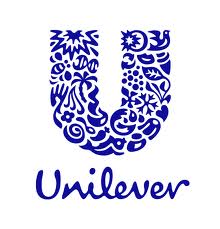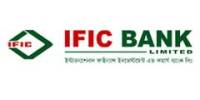Executive Summary
Unilever Limited is one of the largest multinational business firm in the world. Over the last four decades, Unilever Bangladesh has been constantly bringing new and world-class products for the Bangladeshi people to remove the daily drudgery of life. Over 90% of the country’s households use one or more of our products. It provides sixteen verities brands and try to mitigate all types of human demand by introducing with new innovative products. Unilever Operations in Bangladesh
Provide employment to over 10,000 people directly and through its dedicated suppliers, distributors and service providers. 99.5% of UBL employees are locals and they have equal number of Bangladeshis working abroad in other Unilever companies as expatriates. Unilever wants to attract the best graduates to join in their leadership actions. This report enlightens what type of recruitment opportunities offered by Unilever Bangladesh Limited for university students and how the students can access that opportunity. Unilever look for passionate people who want to do real business and have the potential to be highly motivated by brands, and are enthusiastic, creative and rigorous. They want people who are hungry for success and can work confidently in teams.
Unilever create an environment where people with energy, creativity and Commitment work together to fulfill ambitious goals. In addition, they all work to the highest standards of professional excellence and integrity Most career are open to graduates of any discipline, although there are some exceptions. If you know which area interests you, great – but it’s good to keep an open mind and find out about all the opportunities they offer. Unilever accomplish their recruitment and selection process basically into three criteria. One is committed in distribution department where employs is selected on their physical skilled and recruitment and selection process is committed by competency based interview, case study interview, based on case study materials, group discussion, again based on case study materials. It is arranged for entry-level applicants. And in higher level job performer is hired in “special people” job recruitment process. Special people who are already perform within the organization or other relative organization and promoted as a company’s core decision maker. Unilever Bangladesh have a certain connection with the consumers. Among others, Closeup inspires confidence, Lux believes in star power and Surf Excel encourages all to learn through new discovery and exploration. Unilever believe in all these insights as well. They believe the people who work with us are confident of their capabilities, believe in nothing less than star performances and of course are not afraid to work hard at achieving goals.
INTRODUCTION
1.1: Background of the Study
Successful human resource department makes it possible for the organization to acquire the number and types of people necessary to ensure the continued operation of the organization by the recruitment and selection process. So it acts an important role in HR department. As a part of BBA program, our Human Resource Management course teacher Ethica Tanzeen assigned us to prepare a report on HRM process and practice process in a multinational organization as related topic on Human Resource Management course. We have selected our report topic as “Recruitment and Selection process in Unilever Bangladesh Ltd.”. We have made a survey for required information in Unilever official site in net. We have prepared our report on August 02, 2011 which will be submitted by August 04, 2011.
1.2 Rational of the study
We are 3rd year 1st semester students. After one and half year, we will be going to job market and competing with other universities’ graduates for getting a suitable job. For getting an expected job, we need to concern about job market condition from today. Going to prepare recruitment and selection process in Unilever Bangladesh as a Human Resource Management course, we acquire required knowledge about Unilever Bangladesh’s recruiting and selection process that help us to perceive a common picture about recruiting and selection process in all multination company in Bangladesh. We can identify our lacks; prepare ourselves for future job market. So, we have the same opinion that this fruitful report not only assure reasonable grade mark in our curriculum result but also assure well-done feedback for near future job market.
1.3: Objective of the Study
We have prepared this report based on two purposes. Those are-
1.3.1 Primary Objective:
The report aims to provide information on the procedures of Recruitment and selection techniques followed by the UBL through HR department.
1.3.2 Secondary Objective:
a) Unilever is one of the world greatest consumer goods companies.
The report is strongly informed with how this multi-local multi-national company conducts the aptitude ands psychometric for a candidate and how it helps them to get objective, reliable and relevant information on candidates.
b) Unilever always try to add variety in life. At Unilever they have created an environment where people with energy, creativity and commitment work together to fulfill ambitious goals. This report helps us to know how the selection process of a candidate leads him to become leader.
1.4: Scope of the Study
There is a certain boundary to cover this report. Our particular report only covers recruitment and selection process in Unilever Bangladesh Ltd. We mainly focus on entry level recruitment and selection process in Unilever Bangladesh. And we also cover executive and higher-level employs’ recruitment and selection process. We collecting data and some valuable information by internet from Unilever Bangladesh Ltd. Official web-site.
1.5: Limitations of the Study
We are lucky enough to get a chance to prepare a report on “Recruitment and Selection process in Unilever Bangladesh Ltd.” We tried heart & soul to prepare a well-informed report. But unfortunately we faced some difficulties when preparing this report. We tried to overcome the difficulties. In spite of trying our level best, some difficulties that hamper our schedule report work:
1.4.1 Shortage of time:
Within a short time, we need to prepare some other courses’ reports for in this session.
For this reason, we could not get a fluent time schedule for the report.
1.4.2 Limitation of related with the organization:
The employees of Unilever Bangladesh Limited were too busy of there work. For this, they did not sufficient time to fulfill our queries and some of them neglected us to support.
1.4.3 Difficulty in collecting data:
Many employers of the organization were not well known about all information that we asked them. Many of them also hesitated to answer the questions. These things hampered the information collection.
ORGANIZATIONAL PART
2.5: Unilever Bangladesh Limited at a glance
Over the last four decades, Unilever Bangladesh has been constantly bringing new and world-class products for the Bangladeshi people to remove the daily drudgery of life. Over 90% of the country’s households use one or more of our products.
2.5.2 Operations
Home and Personal Care, Foods
2.5.3 Constitution:
Market Share of Unilever & Bangladesh Government:
39% market share of Unilever 61% market share of Bangladesh Government .
2.5.4 Product categories
Household Care
Fabric Cleaning
Skin Cleansing
Skin Care
Oral Care
Hair Care
Personal Grooming
Tea based Beverages
2.5.5 Unilever brands
- Wheel
- Lux
- Lifebuoy
- Fair & Lovely
- Pond’s
- Close Up
- Sunsilk
- Lipton Taaza
- Pepsodent
- Clear
- Vim
- Surf Excel
- Rexona
- Dove
- Vaseline
- Lakme
LITERATURE REVIEW
3.1 Definition of recruitment
Recruiting is the process of finding & attracting capable applicants for employment. The process begins when new recruits are sought & ends when their applications are submitted. The result is a pool of applicants from which new employees are selected.
According to Robins, “The ideal recruitment effort will attract a large no of qualified applicants who will take the job if it is offered. A good recruiting program should attract the qualified & not attract the unqualified. This dual objective will minimize the cost of processing unqualified candidates”.
So recruiting is a process of discovering potential candidates for the actual or anticipated organizational vacancies. Or from another perspective, it is a linking activity-bringing together those with jobs to fill and those seeking jobs.
3.2 Factors Influencing Recruiting Effort
Although every organization engages in recruiting activity some do so to a much larger extent than others.
a. Size:
Large organization with huge manpower will recruit much more than smaller
b. Employment condition:
In the community where the organization is located will influence how much recruiting takes place.
c. Working condition, salary & benefit package:
These influence need for turnover, therefore the future recruiting of the organizations.
3.2 Possible Constraints on Recruiting Process
The pool of qualified applicants may not have included the ‘best’ candidate or the ‘best’ candidate may not want to be employed by the organization. There are five possible constraints which limit the manager’s freedom to recruit.
a. The image of the organization:
If the image perceived to be low, then the likelihood of attracting a large number of applicants is reduced. Then the image of the organization, there for, should be considered a potential constraint.
b. Attractiveness of job:
If the job is unattractive, recruiting a large & qualified pool of applicants will be difficult for e.g. position for p.s. since these jobs traditionally appealed to females & woman have a wider selection of job opportunities. It has resulted in a severe shortage of secretarial jobs.
c. Internal organizational policies:
Internal organizational policies, such as “Promote from within wherever possible” will
give priority to individuals inside the organization. Such a policy will ensure that all
positions except entry level positions will be filled from within the ranks. Although this is
promising once one is hired, it may reduce the number of applicants.
d. Union requirements:
Union requirements also restrict recruiting sources. Union determines who can apply &
who has the priority in selection. It restricts management’s freedom to select the best employees.
e. Government’s Influence:
The Governments influence in the recruiting process should not be overlooked. An employer can no longer seek out preferred individuals based on non-job-related factors such as physical appearance, sex or religion background. Government may impose restrictions on these matters.
3.3 Recruiting Sources
Recruiting is more likely to achieve its objectives if recruiting sources reflect the type of the position to be filled. Certain recruiting sources are more effective than others for
filling certain types of jobs. Mainly the sources can be divided into two ways. They are discussed below:
3.3.1 Internal sources
Many large organizations will attempt to develop their own employees for positions beyond the lowest level. Now some internal sources are discussed below:
a. Job posting:
Posting notice of job openings on company bulletins boards is an effective internal recruiting method. It informs employees about openings & required qualifications &
invites qualified employees to apply.
b. Departing employees:
Departing employees are those who leave the organization because they can no longer
work the traditional forty-hour workweek, child care needs, education or others are the common reasons.
3.3.2 External sources
In addition to looking internally for candidates, it is customary for organizations to open up recruiting efforts to the external community. These efforts are discussed below:
a. Advertisement:
When an organization wishes to communicate to the public that it has a vacancy advertisement in one of the popular method used. Want ad describes the job, the benefits and tells those who are interested how to apply.
b. Employee referrals/recommendations:
Recommendation from a current employee. An employee will recommended if he believe
the individual can perform adequately. Employee referrals also may have acquired more
accurate information about their potential jobs.
d. Temporary helps Service:
These types of different organization can be a source of employees when individuals are
needed on a temporary basis. Temporary employees are particularly valuable in meeting
short-term fluctuations in HRM needs.
e. Schools colleges & universities:
Whatever the educational level required for the job involves a high-school diploma, specific vocational training, or a collage background with a bachelor’s, master’s, or doctoral degree, educational institutions are an excellent source of potential employees.
f. Professional organizations:
It includes labor unions; operate placement services for the benefit of their members. The
Professional organizations include such varied occupations as industrial engineering,
psychology, accounting, legal, & academics.
3.4 Selection
Selection is the process of select the best candidates for the job by using various tools and techniques.
According to R.M. Hodgetts, “Selection is the process in which an enterprise chooses the applicants who best meet the criteria for the available position.”
So we can conclude that, it is the process in which candidates for employment are divided
into two classes; those who are to be offered employment and those who are not.
3.5 Testing guideline
Some basic testing guidelines are followed in selection process which are:
a) Use tests as supplements
b) Validate the tests for appropriate jobs
c) Analyze all current hiring and promotion standards
d) Beware of certain tests
e) Use a certified psychologist
f) Maintain good test conditions
3.6 Definition of interview
Interviewing candidate is a potential screening tool that gives an opportunity to make judgment on the candidates’ enthusiasm & intelligence & to access subjective aspects of the candidates’ facial expression, appearance, nervousness & so forth & to predict future job performance on the basis of the obtained information. Interview gives you a chance to size up the candidate personally and to pursue questioning in a way that test cannot.
3.8 Types of Interview
Interviews can be classified according to structured interview and unstructured interview.
a) Structured interview:
It is known as directive interview. It is an interview following a set of question & response are specified in advance.
b) Unstructured interview:
It is known as non-directive interview. It is an unstructured conversational- style interview. Question is asked as they come to mind. It allows the interviewer to ask follow-up questions, based on the candidate’s last statement.
RECRUITMENT IN UNILEVER BANGLADESH
LIMITED
4.1: Recruiters qualification
Recruiting is the process of finding & attracting capable applicants for employment. The process begins when new recruits are required & ends when their applications are submitted. The result is a pool of applicants from which new employees are selected.
Manager becomes involves in this process. However in large organization, like the Unilevers Bangladesh specialists are often used to find & attract capable analyst they are called recruiters.
First, Unilever is such a big organization that requires huge man power every year for its always boosting operations in various level and arena. However for common business operations they need
Three type of manpower
1. Fresh graduates as knowledge worker,
2. Specialist experienced people for special purpose
3. People for Skilled and labor based events
So in our discussion we will focus on all the three types.
Fresh graduates as knowledge worker
Commonly we discuss and learn major about this level recruitment and selection. The fresh graduates’ recruitment is in fact the main and major recruitment event for Unilever.
From across the country they get people for their recruitment. The universities in the country provide the people to be knowledge worker in big organizations like unilever and such. For this they highly suit the business graduates Passed from reputed business school or institutes both from country and from abroad.
The discussion is now designed as to the following four terms:
1. Personnel planning and vacancy announcement
2. Nature of Application form
3. Recruiters qualification
4. channels of recruitment
5. Recruitment- Constraints and challenges
4.1.1 Personnel planning and vacancy announcement
Human Resource department headed by The HRM, receives data about need of personnel, the vacancy information is then analyzed by HRM in collaboration with the finance department with financial feasibility of the recruitment. After judging the
feasibility the approved number of vacancies is informed to the job market through strong mass media. As means of media they use
• The internet,
• Online based job portals
• English and bangla news paper
• On campus recruitment
• From Intern inventory.
4.1.2 Recruiters’ qualification
Recruitment qualification for entry-level employees:
• You must be graduated within less than three years, or will graduate within the next 12 months form a reputable university.
• You must be within 28 years of age.
Recruitment qualification for labor based task:
• You must physically fit and skilled in the particular task.
4.2: Methods of recruitment
4.2.1 Recruitment channel
Normally we know about two types of recruitment channel those are
1. External recruitment channel
2. Internal recruitment channel
- External recruitment channel
When job openings cannot be filled internally, the HR department must look outside the organization and basically for UBL, recruitment of fresh graduates is done through this means. There are 8 ways for external recruitment in the UBL, which occurs in direct or indirectly for various level of recruitment. Those are-
1. Employee referrals
2. Advertising
3. Educational institutions & Professional associates
4. International recruitment
2. Employee referrals
For lower level workers, Unilever follow the employee referrals procedures. This is the procedures when existing employees refer one new and the new is considered to be further judgment.
3. Advertising
UBL next to employee referrals in fact for fresh graduates majorly follow the advertisement procedure for recruiting purposes. They advertise in the reputed English and Bengali National papers. They also use the internet for online application.
5. Educational institutions & Professional associates
More over the organization takes its manpower from the universities and educational institutions across the country. The nationwide universities and its important institutes provide the potential graduates as the employee of the organization.
From discussion with HRM it was known that their preferred institutions range from IBA, BUET, DU, KU, Brac U, NSU, AIUB, JU, to Chittagong University and such.
6. International recruitment
Sometimes, especially in importance of cases international recruitment occurs in ULB.
However such rare events happen if the candidate stays in abroad or are working in
international company on foreign land.
4.2.1 Internal recruitment channel
Current employees are a major source of recruits for all but entry- level positions of unilever Bangladesh ltd.. Whether for promotions or for lateral job transfers, internal candidates already –know the already informal organization and have detail information about its formal policies. In fact for unilever this short of recruitment is occurred only with especial purpose experienced employee recruitment.
4.4 Recruitment : constraints and challenges
Recruiters face such common constraints which are:
a. Biasness:
Most of the time, the organization’s employers try to appointment their relatives, familiar person.
b. Competition of talent
There is a lack of vast talent people in Bangladesh for the special task. The potential job applicants most of the time can’t meet up Unilever requirement. Few talent guys who has already appointed with other multinational company
c. Job requirement
People with greater experience usually require a higher level of job. In our country, there are vast population but they are not so skilled in working with hard labor. They feel comfort flexible job like government job. So Unilever Bangladesh can’t fulfill their requirement in all time.
SELECTION PROCESS IN UNILEVER
BANGLADESH LIMITED
Selection is the process of select the best candidates for the job by using various tools and techniques. In our country, recruitment and selection process work simultaneously. Those are joined term as employment function of the organization and this employment function is stated here for Unilever’s practices.
5.1: Reception of application
After accomplishing the recruitment process, Unilever go to the selection process where they start the process with the reception of application form filled up through internet online form. After scrutinizing the data, they select applications for written test.
5.3: Employment test
This written test measures the candidates
1. Analytical ability
2. Computation ability
3. Verbal skill
4. Written skill
5. General knowledge
More above 65% marks ensures applicants pass.
5.4: Assessing candidate through interview
Mainly three steps are followed in the selection procedure. In the first stage the candidates are invited for a viva with sales and training manager, Dhaka in his Gulsan office.A human resource manager also exist there. In this viva the candidates situation handle ability is measured.
Second phase:
It is the viva with the general sales and operation manager ( GOSM), and trade marketing manager .in this stage individual skill is measured. The question tries to measure out the fitness of the candidate for the post.
Third phase:
In this stage the applicant face the HRD customer development team (CDT) this phase
measure the applicability of the applicants’ potential for the jobs. In these stage why the
applicant prefers the Unilever and why it would like to join the expected team.
5.5: Physical ability test
The physical test is administered by Apollo Hospital Dhaka to measure the HIV, Hepatitis B, C or such many diseases in its applicant’s health and fitness for job effort.
5.6: Work samples
For some technical jobs Unilever follows the work sample test on particular employee like the one of Finance and IT.
5.7: Hiring decision
Finally the every step success ensures an applicant join in the Unilever family.
RECOMMENDATION AND CONCLUSION
7.1 Recommendation
After going through the report we draw some recommendations which are:
- We have to suggest Unilever Bangladesh to arrange “on campus” recruitment. In our survey we get a common scenario that “on campus” recruitment process motivates the student to enthusiastic, creative and rigorous. Students try to show extra ordinary performance and perform their innovative ideas. innovative. They come with new idea and work hear and soul to accomplish their task.
- ii. Unilever entry-form is so complicated and some information which is asked for apply is not available all time. Our recommendation to minimize the entry-form and make it easy presentation for all potential applicants.
7.2 Conclusion
The report has attempted to point out recruitment and selection process in Unilever Bangladesh. We can get little information about recruitment and selection process in Unilever Bangladesh. We also take support by some secondary reports as well as internet and Unilever report publication.
ANALYSIS AND FINDINGS
6.1: The types of recruitment in Unilever Bangladesh Limited
Unilever follow three type of recruitment process, which are:
• Fresh graduates as knowledge worker,
• Specialist experienced people for special purpose
• People for Skilled and labor based events
6.2: The types of selection in Unilever Bangladesh Limited
Unilever follow some selection evaluation test to select the best candidate, which are:
• Employment test
• Assessing candidate through interview
6.3: The frequency of recruitment by Unilever Bangladesh Limited
Unilever Bangladesh Limited accomplish their recruitment process depends on created vacancy. However, we see a common phenomena that Unilever Bangladesh arranges recruitment and selection activities twice a year when students passes from various institutes based on their completion of 6 moth semesters.
















